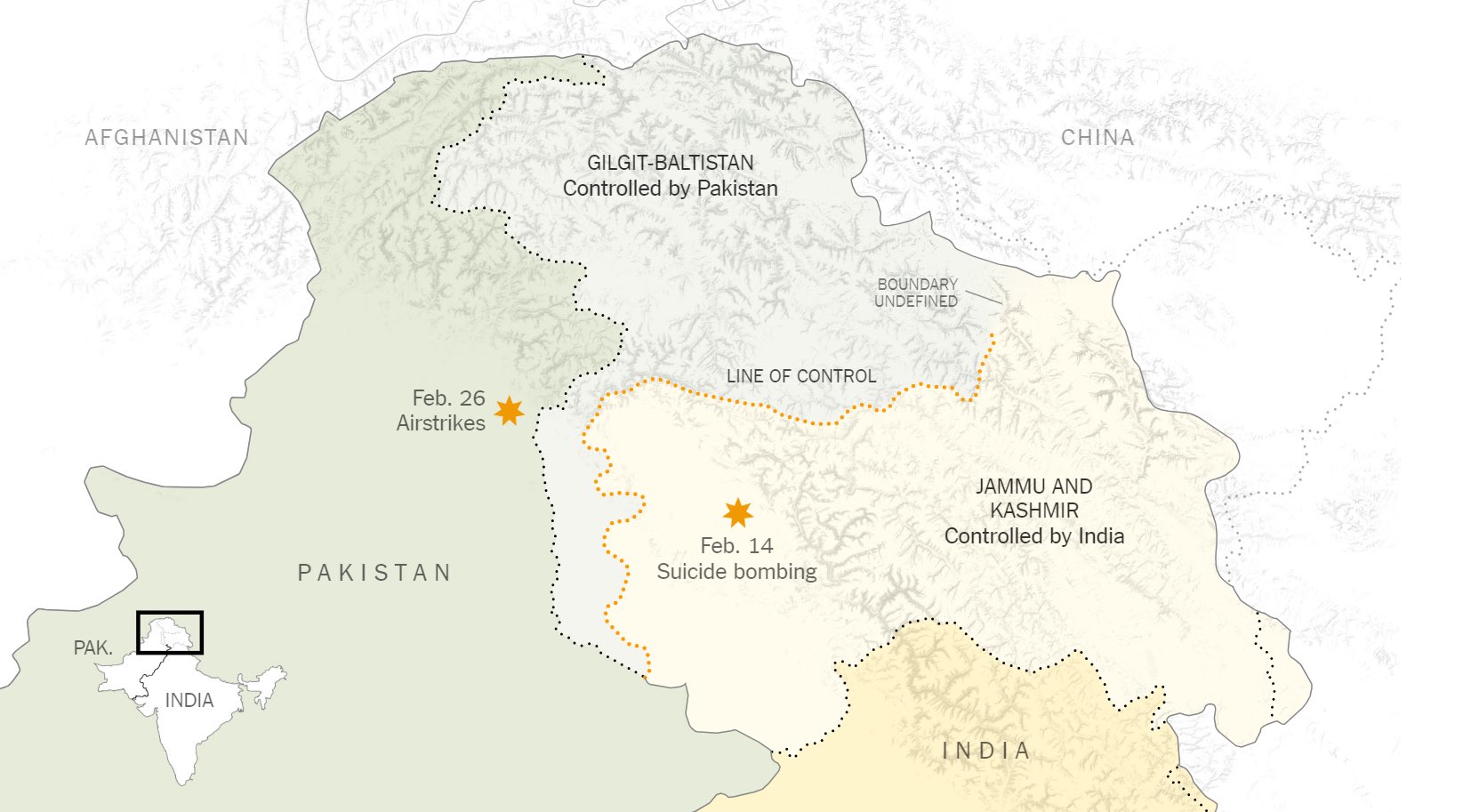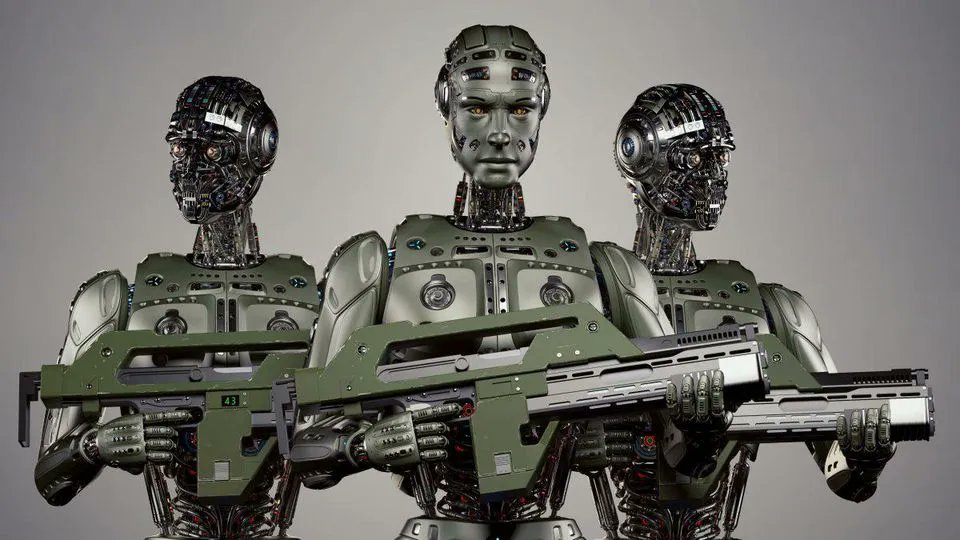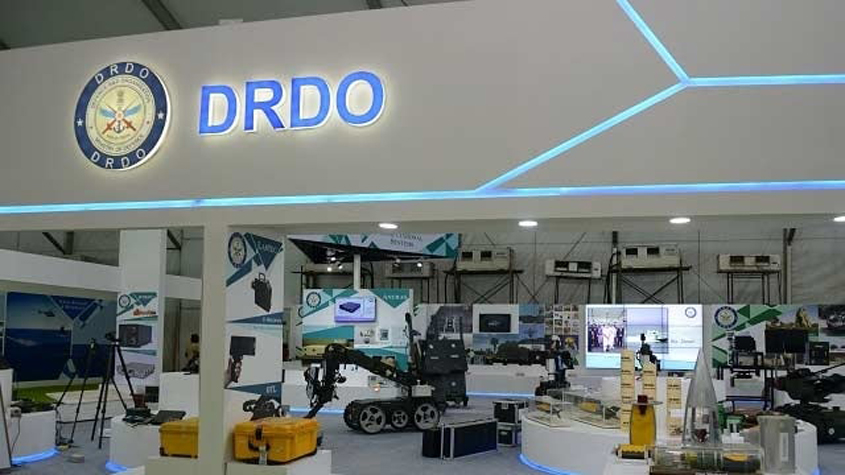V
Vedant Pathak
Guest
On 14th February 2019, a military convoy was blown up by terrorists in Pulwama, marking a dark day in India ’s history. This tragic event served as a wake-up call for the nation, accelerating the process of modernizing its forces. The ambitious goal? To reduce personnel by 1 lakh and increase the deployment of robots in the forces by 2027.

The Indian Airforce responded to that attack by flying into Pakistan.
In response to the Pulwama attack, the Indian Air Force took unprecedented action by flying into Pakistan and firing airstrikes near the town of Balakot. This marked a significant shift in India’s approach to dealing with such threats. However, the following day saw a clash between Pakistani and Indian fighter jets, resulting in the downing of an Indian aircraft, a Soviet-era Mig 21, and the capture of its pilot.
As of 2022, over half of India’s military equipment is either of Soviet or Russian origin, followed by American & French. This reliance on foreign equipment forces India to spend about 2% of its GDP every year on importing arms & weapons, a necessity due to its long-standing geopolitical tensions with Pakistan & China.
India has been the largest importer of arms and weapons in the world since 1993. This dependence puts the nation in a vulnerable position during wartime. For instance, during the Kargil War, India was denied vital GPS data by the US. This forced the Indian Air Force to buy laser-guided bombs & ammunition on an emergency basis from Israel.
The wars of the future will not be won by bravery alone. In 2020, during the clashes with China in the Galwan Valley, Ladakh, China used drones to track down Indian soldiers. The discussion of deploying robot soldiers along the border was also brought up. These robots, equipped with cameras and machine guns, could be remotely controlled, marking a new era in warfare.

Robots are equipped with cameras and machine guns.
The keyword here is ‘manufacturing’. A nation can’t aspire to be a global power without a strong military. And there cannot be a strong military without a manufacturing system in place that churns out advanced weapons, as and when required by the armed forces.
The future wars won’t be happening only in the physical domains of land, air, and sea. They will be happening in seven domains: air, land, sea, outer space, cyberspace, the electromagnetic spectrum, and near space. The government understands that the war with China is inevitable and that India needs military modernization & indigenous infrastructure to better secure its national interests.
Until now, India has been skipping steps in transitioning from a developing to a developed country. Weapons need manufacturing units, but India as a whole doesn’t have a hardware startup culture. Most defense startups are either working on software or UAVs (drones). This needs to change if India is to prepare effectively for the wars of the future.
India’s dependence on foreign suppliers for its military hardware has become a twofold burden. India has to deflect international pressure from the West by isolating Russia, our largest military supplier, and keep paying for high-value imports every year.
For decades, what stood in the way of an indigenous military-industrial complex was India’s political leadership keeping the private sector out of the defense sector. The Public Sector Undertakings (PSUs) would promise to develop weapons required by the forces, but would never deliver. This necessitated emergency imports, benefiting the middlemen and the politicians who got kickbacks from the defense deals.
In 2019, the position of Chief of Defence Staff was created to restructure the Indian Armed Forces from a top-down approach and standardize weapons procurement strategies. India has also banned the import of 900+ weapons, parts, & systems over the last few years to boost ‘Make in India’.
The robots being deployed by India are not meant to be used as weapons; they are meant to aid our soldiers in transport & surveillance. These are robotic mules that will transport weapons in hard terrain.
The government has been actively working on developing advanced technologies & products for the modernization of the military. DRDO has established 5 DRDO Young Scientist Laboratories (DYSLs) to provide solutions in advanced technology areas like artificial intelligence, quantum technologies, cognitive technologies, asymmetric technologies, and smart materials to tackle emerging challenges in military warfare.

DRDO is working on developing advanced technologies.
The government has also launched the Innovations for Defense Excellence (iDEX) scheme involving startups and Micro, Small, & (MSMEs), a portal named SRIJAN, to facilitate indigenization by Indian industry, including MSMEs, and opened up Defense Research & Development (R&D) for industry, startups, and academia with 25% of the defense R&D budget.
This is just the start, and we have miles to go. We not only have to build a solid in-house manufacturing infrastructure, but we also have to do it fast, so that the research institutions can focus on building new technologies and the private sector can focus on mass producing them.
The post How India is Preparing for the Wars of the Future appeared first on The Jaipur Dialogues.
Continue reading...

The Indian Airforce responded to that attack by flying into Pakistan.
The Aftermath and Response
In response to the Pulwama attack, the Indian Air Force took unprecedented action by flying into Pakistan and firing airstrikes near the town of Balakot. This marked a significant shift in India’s approach to dealing with such threats. However, the following day saw a clash between Pakistani and Indian fighter jets, resulting in the downing of an Indian aircraft, a Soviet-era Mig 21, and the capture of its pilot.
The Challenge of Outdated Equipment
As of 2022, over half of India’s military equipment is either of Soviet or Russian origin, followed by American & French. This reliance on foreign equipment forces India to spend about 2% of its GDP every year on importing arms & weapons, a necessity due to its long-standing geopolitical tensions with Pakistan & China.
The Vulnerability of Dependence
India has been the largest importer of arms and weapons in the world since 1993. This dependence puts the nation in a vulnerable position during wartime. For instance, during the Kargil War, India was denied vital GPS data by the US. This forced the Indian Air Force to buy laser-guided bombs & ammunition on an emergency basis from Israel.
The Future of Warfare: Robots and Drones
The wars of the future will not be won by bravery alone. In 2020, during the clashes with China in the Galwan Valley, Ladakh, China used drones to track down Indian soldiers. The discussion of deploying robot soldiers along the border was also brought up. These robots, equipped with cameras and machine guns, could be remotely controlled, marking a new era in warfare.

Robots are equipped with cameras and machine guns.
The Need for Manufacturing
The keyword here is ‘manufacturing’. A nation can’t aspire to be a global power without a strong military. And there cannot be a strong military without a manufacturing system in place that churns out advanced weapons, as and when required by the armed forces.
If India doesn’t manufacture its own weapons, ammunition, technology, & strategy, and keeps on importing, then it will be difficult for us to win wars.
The Future Battlefields
The future wars won’t be happening only in the physical domains of land, air, and sea. They will be happening in seven domains: air, land, sea, outer space, cyberspace, the electromagnetic spectrum, and near space. The government understands that the war with China is inevitable and that India needs military modernization & indigenous infrastructure to better secure its national interests.
The Road Ahead
Until now, India has been skipping steps in transitioning from a developing to a developed country. Weapons need manufacturing units, but India as a whole doesn’t have a hardware startup culture. Most defense startups are either working on software or UAVs (drones). This needs to change if India is to prepare effectively for the wars of the future.
The Challenges and Solutions
India’s dependence on foreign suppliers for its military hardware has become a twofold burden. India has to deflect international pressure from the West by isolating Russia, our largest military supplier, and keep paying for high-value imports every year.
For decades, what stood in the way of an indigenous military-industrial complex was India’s political leadership keeping the private sector out of the defense sector. The Public Sector Undertakings (PSUs) would promise to develop weapons required by the forces, but would never deliver. This necessitated emergency imports, benefiting the middlemen and the politicians who got kickbacks from the defense deals.
In 2019, the position of Chief of Defence Staff was created to restructure the Indian Armed Forces from a top-down approach and standardize weapons procurement strategies. India has also banned the import of 900+ weapons, parts, & systems over the last few years to boost ‘Make in India’.
The Role of Robots and Drones
The robots being deployed by India are not meant to be used as weapons; they are meant to aid our soldiers in transport & surveillance. These are robotic mules that will transport weapons in hard terrain.
Government Initiatives
The government has been actively working on developing advanced technologies & products for the modernization of the military. DRDO has established 5 DRDO Young Scientist Laboratories (DYSLs) to provide solutions in advanced technology areas like artificial intelligence, quantum technologies, cognitive technologies, asymmetric technologies, and smart materials to tackle emerging challenges in military warfare.

DRDO is working on developing advanced technologies.
The government has also launched the Innovations for Defense Excellence (iDEX) scheme involving startups and Micro, Small, & (MSMEs), a portal named SRIJAN, to facilitate indigenization by Indian industry, including MSMEs, and opened up Defense Research & Development (R&D) for industry, startups, and academia with 25% of the defense R&D budget.
This is just the start, and we have miles to go. We not only have to build a solid in-house manufacturing infrastructure, but we also have to do it fast, so that the research institutions can focus on building new technologies and the private sector can focus on mass producing them.
The post How India is Preparing for the Wars of the Future appeared first on The Jaipur Dialogues.
Continue reading...
